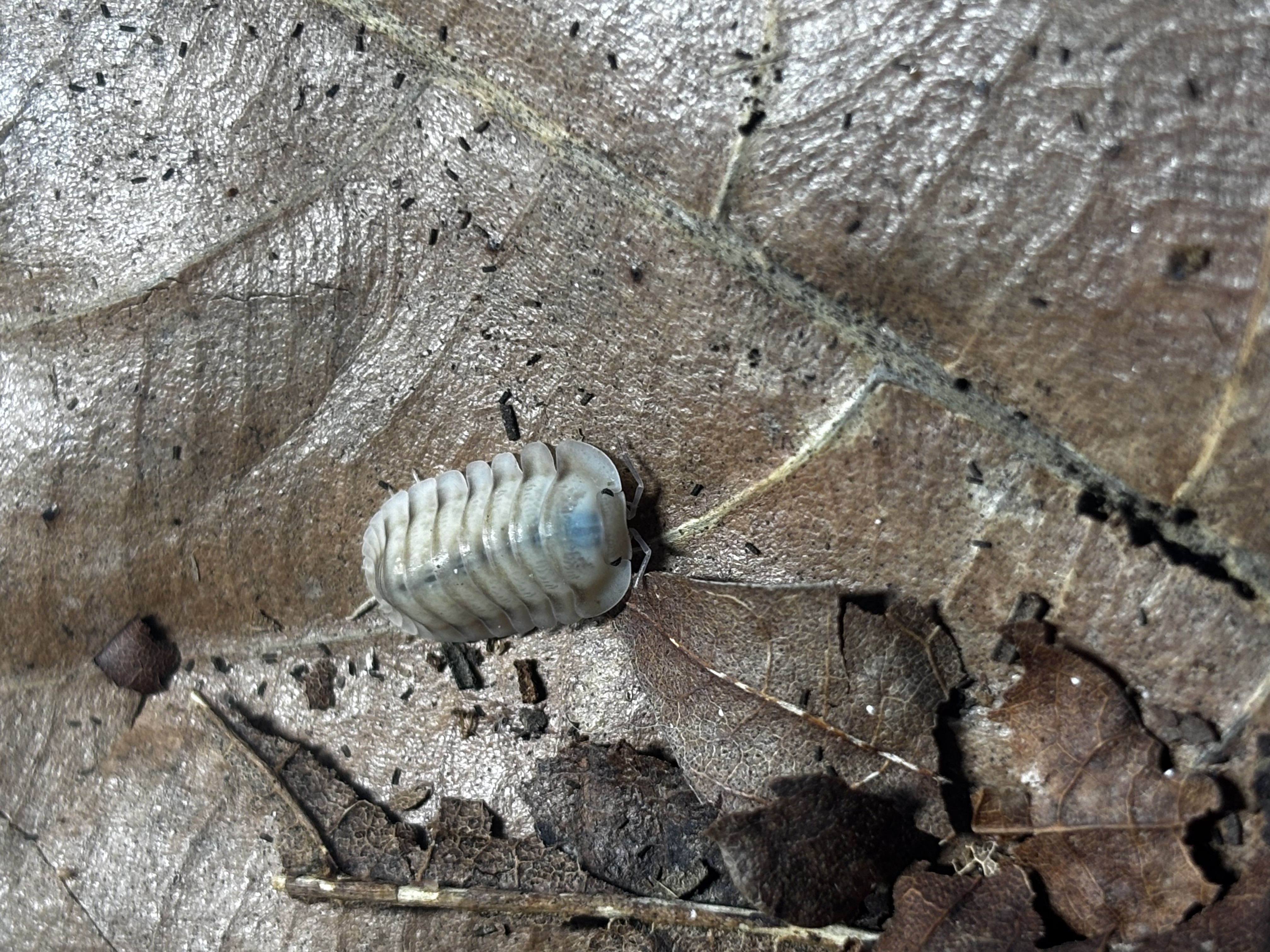
Cubaris White Pigeon
7 for 80.00
$80.00
Out of stock
Cubaris sp. "White Pigeon" is a popular, captive-bred isopod species known for its stunning white coloring. It is a leucistic mutation of theCubarissp. "Blue Pigeon" and is native to Thailand. They are a hardy, prolific, and active species, making them a good choice for both bioactive enclosures and as display animals.
Appearance
Color: The White Pigeon isopod features a creamy white to slightly yellowish body.
Eyes: Unlike true albinos, which lack pigment, this leucistic variety retains its dark eyes.
Size: This is a medium-sized species, reaching an average adult size of around 1.8 to 2.0 cm.
Habitat and environment
Enclosure: A clear plastic container of at least 6 quarts or more is suitable for a colony. A deep substrate of 3–4 inches is recommended, as they are a burrowing species.
Substrate: Use a substrate rich in decaying organic matter, such as decomposing wood mulch, natural leaf litter, and sphagnum moss.
Moisture: Maintain high humidity and a moisture gradient in the enclosure. Keep one area consistently damp by misting weekly (or daily in dry climates) and allow other areas to dry out.
Temperature: Maintain a stable, warm temperature between 75°–80° F.
Ventilation: Provide moderate ventilation, but ensure enough humidity is retained. Avoid harsh chemicals or candle fumes near the enclosure, as these can be harmful.
Enrichment: Add multiple pieces of cork bark and limestone to provide hiding places and a source of calcium.
Diet
Primary food: The main diet should consist of a constant supply of leaf litter and decaying soft wood.
Protein: Supplement their diet with protein sources once or twice a week, such as freeze-dried shrimp, fish flakes, or commercial isopod food.
Calcium: Provide a calcium source like cuttlebone or limestone to support exoskeleton health.
Vegetables: Offer occasional treats like yam, zucchini, sweet potatoes, or other root vegetables.
Reproduction and behavior
Breeding: White Pigeons are known to be prolific breeders once the colony is well-established.
Activity: While they are more active at night, they will come out during the day more frequently than other Cubarisspecies. They are also known for their characteristic "pill bug" defensive behavior.